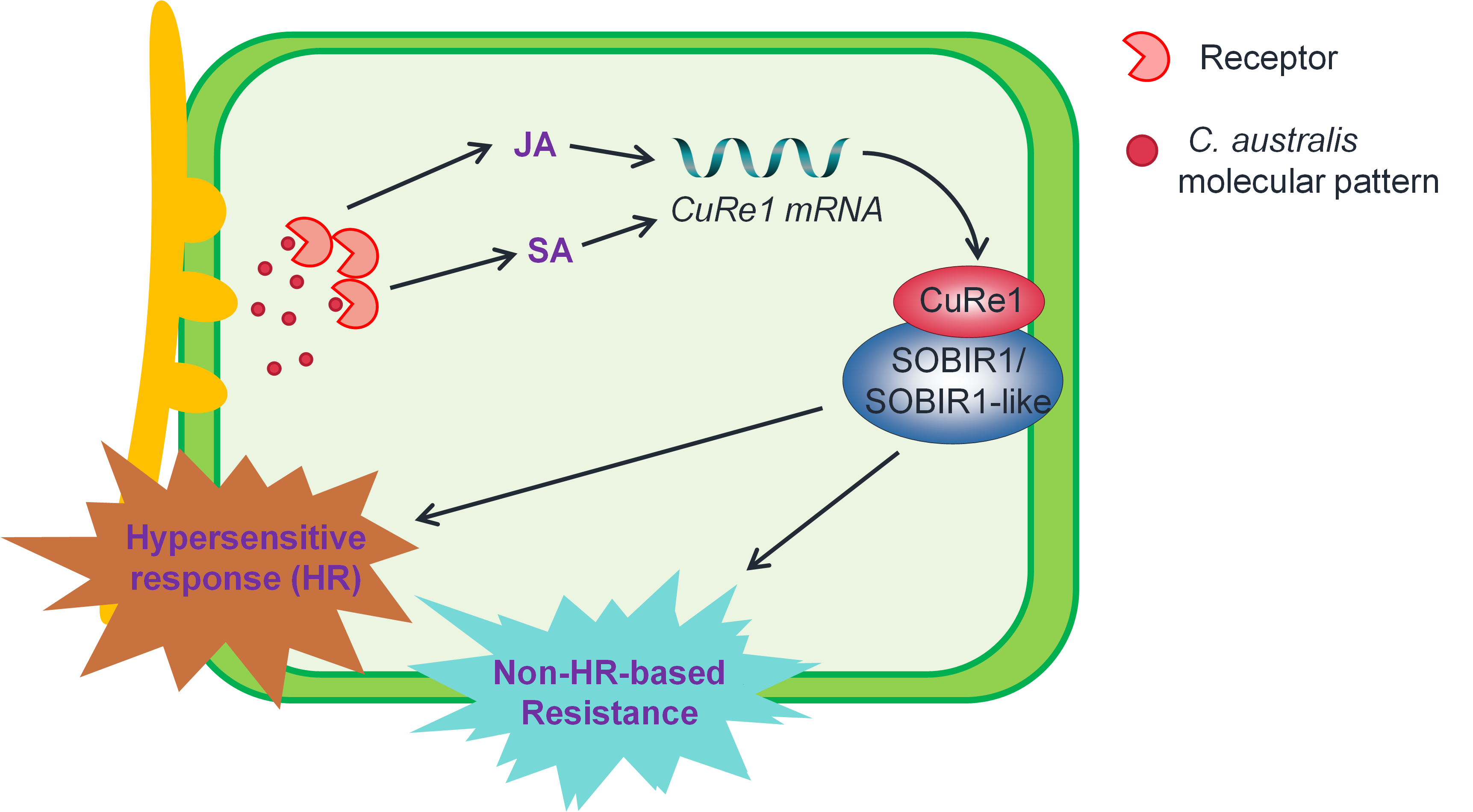Scientists unveiled the function of plant hormone regulatory network in tomato warfare against dodder parasitization
Published 01 July, 2025
Around 4,000 to 5,000 plants are parasites. Most parasitic plants use an organ, named haustorium, to attach to and penetrate host plants to obtain water and nutrients. Some parasitic plants, such as Cuscuta (dodder) and Orobanche (broomrape), are aggressive parasitic weeds that threaten agriculture. Being rootless and leafless, dodder parasites depend entirely on host plants to survive. These obligate parasites infect diverse plant species, ranging from agricultural crops to trees, causing substantial economic loss. Thus far, effective control measures are still lacking.
When dodder initiates parasitization on the cultivated tomato (Solanum lycopersicum) plants, a hypersensitive response (HR) is developed on the tomato stems where dodder haustoria penetrate, and HR physically terminate the development of haustoria, preventing vascular connectivity between dodder and tomato plants. Such a HR in cultivated tomato shuts down the nutrient supply, effectively killing the invading dodder. However, the molecular basis of this defense response remains largely elusive.
To that end, a research team led by Prof. Jianqiang Wu at the Kunming Institute of Botany, Chinese Academy of Sciences developed transgenic tomato plants with defects in hormone-related pathways and putative resistance-related genes. The researchers demonstrate that dodder (Cuscuta australis) parasitization highly induces jasmonic acid (JA) and salicylic acid (SA) accumulation in stems of cultivated tomato plants, and both hormone pathways are essential for HR, as disruption of either hormone pathway resulted in susceptibility of cultivated tomato plants to dodder.
Importantly, the team provides evidence that the JA and SA pathways regulate the expression of a key resistant gene CuRe1, and furthermore, CuRe1 and its interacting partner SOBIR1/1-like were found to be involved in activation not only HR- but also non-HR-based resistance to dodder.
The findings also suggest a putative receptor in cultivated tomato which recognizes certain cues from dodder during parasitization, while in the wild tomato Solanum pennellii this receptor is absent.
Our findings delineate a linear model of defense mechanism in the resistance of cultivated tomato to dodder,” says Wu. “This study advances our understanding of host-parasitic plant interactions and provides new possibilities for developing control strategies against dodder and maybe other parasitic species.”

Contact the author: Jianqiang Wu, wujianqiang@mail.kib.ac.cn
Funder: This work was supported by National Natural Science Foundation of China (32270314), the Key Project of Applied Basic Research Program of Yunnan (202201AS070056, 202301AS070064), Yunnan Revitalization Talent Support Program "Yunling Scholar" Project, Chinese Academy of Sciences Light of West China Program, Yunnan Revitalization Talent Support Program “Young Talents” Project (XDYC-QNRC-2022-0001).
Conflict of interest: The authors declare that they have no known competing financial interests or personal relationships that could have appeared to influence the work reported in this paper.
Article title: Jasmonic acid and salicylic acid transcriptionally regulate CuRe1 in cultivated tomato to activate resistance to parasitization by dodder Cuscuta australis, Plant Diversity, https://doi.org/10.1016/j.pld.2025.03.003